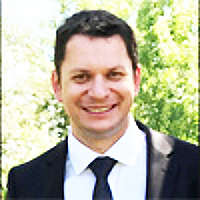Diagnostic imaging in congenital adrenal hyperplasia – how does it help?
Published on: 29th April, 2020
OCLC Number/Unique Identifier: 8586055620
The phenotypic manifestation of congenital adrenal hyperplasia (CAH) is variable, and this largely depends on the extent of 21-Hydroxylase enzyme deficiency. In non- classic CAH (NCCAH), the clinical features predominantly reflect the androgen excess rather than adrenal insufficiency. In boys, the condition may not present until much later in childhood, where the diagnosis is made following presentation with precocious puberty, features of aldosterone insufficiency, or this condition may be detected during fertility workup Imaging is generally not used in the evaluation of CAH, but may be helpful for the diagnosis, management, and follow-up of these patients. CAH can result in adrenal enlargement in both classic and non-classic forms of adrenal hyperplasia. The so-called adrenal rest tissue may be seen at several sites throughout the body, including the celiac plexus region, broad ligaments, normal ovaries, and testes. Sustained elevation of adrenocorticotropic hormone (ACTH) in patients with CAH has been postulated to cause adrenal rest cells to grow and become functionally active. The discovery of bilateral adrenal enlargement during radiologic evaluation for unrelated disease processes might serve as a mode of presentation for clinically not apparent or non- classical congenital adrenal hyperplasia (NCCAH).
Case report: contrast imaging in the setting of venous thrombosis
Published on: 28th February, 2023
Disruption to contrast agent supply chains for radiology investigations has become an additional consequence of the COVID-19 pandemic. Various recommendations, including dose reductions and choices of alternative agents, have been made to help account for this limited availability. This case demonstrated how two separate CT venograms with different contrast agents, undertaken on the same day for the same patient, yielded different results; venous thromboses were more prominent in the subsequent scan. Although there was some evidence of venous sinus thrombosis on the first scan, repeat imaging was required to further characterize the lesions identified. The case exemplifies the notion that diagnostic imaging should always be guided by a detailed history and examination. It also raises the discussion point of whether more strict or uniform protocols should be developed to facilitate contrast administration for radiology investigations. It is important that appropriate doses are always administered to maximize diagnostic yield.
A Perplexing Case of Genito-urinary Tuberculosis in an 83-Year-Old Woman with Increased Levels of Tumor Markers: A Case Report
Published on: 5th December, 2023
Background: Tuberculosis (TB) is a significant global health problem, and extrapulmonary TB can present with no specific clinical or radiographic findings. Genito-urinary TB is often associated with elevated tumor markers and can be misdiagnosed as ovarian/fallopian tube carcinomas, especially in elderly female patients, as genitourinary TB commonly affects women of reproductive age.Objective: We present a rare case of genito-urinary TB in an elderly female patient who was initially misdiagnosed with ovarian cancer with metastasis.Case presentation: An 83-year-old woman with a medical history of diabetes and hypertension presented with complaints of abdominal distension. Diagnostic imaging revealed lesions in the ovaries and omentum and tumor markers were elevated, leading to a suspicion of ovarian cancer with metastases to the omentum. The patient underwent a diagnostic laparotomy and surgical removal of ovaries, fallopian tubes, and the lesion of the greater omentum. However, no malignancy was found during the morphological evaluation. Further histopathological examination confirmed the final diagnosis of genito-urinary tuberculosis, and the patient received anti-TB drugs. The postoperative period was uneventful, and tumor marker levels decreased.Conclusion: As the clinical presentation of genito-urinary TB can mimic ovarian cancer, a histopathological examination should be performed for differential diagnosis, thereby reducing the possibility of inaccurate treatment. This case report highlights the importance of considering genito-urinary TB as a differential diagnosis in elderly female patients presenting with elevated tumor markers, abdominal distension, and suspected genital malignancy. It is crucial to carefully evaluate these cases and explore the possibility of genital TB as an alternative diagnosis, given the overlapping clinical presentation. This highlights the importance of a comprehensive diagnostic approach that includes considering TB in addition to malignancy, even in the context of elderly female patients.
Navigating Diagnostic Dilemmas in Subacute Subdural Hemorrhage: A Case Report
Published on: 26th March, 2024
In this case report a 64-year-old male patient with recent past medical history of head injury complicated by zygomatic arc fracture and mild subarachnoid hemorrhage is studied. He had been presented to the Emergency Department because of progressive neurological symptoms and neurological deficits in the physical examination that could have been indicating subcacute subdural hemorrhage. However, the patient was reluctant to undergo diagnostic imaging due to concerns about radiation exposure. After several explanations, a CT scan was done, which revealed a bilateral subacute subdural hematoma. Neurosurgical management was initiated and intravenous corticosteroid therapy was administered to reduce local edema. The challenge of this case is based on the subtlety of symptoms that might cause patients to delay seeking medical attention. Additionally, patient reluctance to undergo diagnostic tests can complicate management, emphasizing the importance of patient education and therapeutic alliance. Multidisciplinary management involving Neurology and Neurosurgery is crucial for optimal patient care in such cases. This report underscores the significance of effective communication and collaborative decision-making between healthcare providers and patients to ensure timely and appropriate management of complex medical conditions.
Texture Analysis of Hard Tissue Changes after Sinus Lift Surgery with Allograft and Xenograft
Published on: 29th April, 2024
In the realm of dental surgery, implants are essential for replacing missing teeth. To facilitate implant placement, techniques such as bone grafting and sinus lifts are utilized to augment the volume of atrophied alveolar bone in candidates for dental implants. Typically, patients undergo a period of recovery following bone grafts before proceeding with implant placement. This study investigates the efficacy of Cone Beam Computed Tomography (CBCT) in measuring the residual bone volume and assessing bone quality after the healing phase. A texture analysis was conducted on CBCT scans from 42 patients requiring maxillary sinus lift reconstruction. These patients were categorized into two groups based on the type of grafting material used: Xenograft or allograft. The study analyzed the distribution of various texture parameters and conducted a Mann-Whitney U test to identify significant statistical differences between the groups. Results indicated non-normal distributions for specific variables such as Area_S(1,0) and S(1,0)SumOfSqs, while others like S(1,0)Entropy displayed normal distributions. The findings revealed no significant statistical differences in the primary outcomes between the xenograft and allograft groups. However, the average values of the gray shades of pixels in the allograft group were statistically significantly higher compared to the xenograft group, suggesting differences in bone texture post-procedure.
Evaluating the Pros and Cons of Evening and Weekend Outpatient Medical Imaging: Implications for Patients and Radiology Professionals
Published on: 8th August, 2024
Evening and weekend imaging services at outpatient radiology centers offer extended access to diagnostic imaging, potentially increasing patient satisfaction and accessibility, especially for underserved populations. This review explores the benefits and challenges associated with these after-hours operations, focusing on health equity, patient satisfaction, economic considerations, energy and cost savings, and the impact on healthcare professionals. Findings indicate that while after-hours operations can enhance patient satisfaction and access, they also pose challenges such as increased operational costs and staff fatigue. Strategies for improvement include optimizing shift schedules, leveraging technology for better scheduling and communication, and enhancing patient-centered care. Collaborative efforts among imaging centers can further improve service delivery and efficiency.
Survey of Advanced Image Fusion Techniques for Enhanced Visualization in Cardiovascular Diagnosis and Treatment
Published on: 6th March, 2025
Cardiovascular Diseases (CVDs) remain a major global health concern, necessitating accurate and comprehensive diagnostic techniques. Traditional medical imaging modalities, such as CT angiography, PET, MRI, and ultrasound, provide crucial but limited information when used independently. Image fusion techniques integrate complementary modalities, enhance visualization, and improve diagnostic accuracy. This paper presents a theoretical study of advanced image fusion methods applied to cardiovascular imaging. We explore wavelet-based, Principal Component Analysis (PCA), and deep learning-driven fusion models, emphasizing their theoretical underpinnings, mathematical formulation, and potential clinical applications. The proposed framework enables improved coronary artery visualization, cardiac function assessment, and real-time hemodynamic analysis, offering a non-invasive and highly effective approach to cardiovascular diagnostics.MSC Codes: 68U10,94A08,92C55,65T60,62H25,68T07.
















